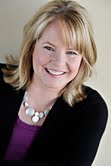- Home
- About Us
- The Team / Contact Us
- Books and Resources
- Privacy Policy
- Nonprofit Employer of Choice Award

 It’s all about the basics—the marketing basics, that is. In this second instalment (go here for part 1), planned giving is looked at through a marketing lens in order to ensure that you can get the best bang for your buck.
It’s all about the basics—the marketing basics, that is. In this second instalment (go here for part 1), planned giving is looked at through a marketing lens in order to ensure that you can get the best bang for your buck.
According to Dr. Russell James’ research (which you can read all about at his website), the oldest boomers will start reaching age 72 and up in about five years’ time. In Canada, life expectancy is 80 for men and 84 for women. Are you ready for the wealth transfer uptick that will start happening when boomers start passing away? Do you know how to identify and target those with strong bequest inclinations? Even if you feel that you can, here are some of Dr. James’ indicators of bequest likelihood:
With these indicators in mind, it’s on to the marketing basics.
4. Know your marketing basicsHere’s what we know about marketing to these groups:
Do you have a website? Yes, we thought so. Guess what? Donors who are considering a bequest will go to your website for more information. Make sure that information on leaving a bequest is easily found. At a minimum, let people know that you accept bequests and give them information on a specific person to contact (no info@ email addresses please). Include stories and testimonials, or even photos and videos.
Take advantage of materials you’re already sending out to donors: newsletter, donor reports, emails; even your signature line can contain one simple request: “Please consider including a gift to XYZ Charity in your will.” Newsletters are a great place to include a testimonial from a bequest donor.
6. Marketing at low costWhat do you send to donors who ask for information about planned giving? Do you send them a bunch of technical information about bequest wording, and life insurance gifts? I thought so.
Consider putting together a simple brochure (it can be printed on demand to save money). Again, focus on the why, not the how. Tell stories. Talk about your vision for the future. Mention bequests at work. Introduce the staff (with photos and a bit of their story).
Want to take your planned-giving program one step further? Budget to send at least one legacy marketing mailing each year. It should be a letter from a bequest donor (either a regular donor or someone in a leadership position at your organization), and should tell their love story with your organization (find out why they first started giving, and why they left a bequest). It should be told in the first person, and be sent out in a hand-addressed envelope with a live stamp. Depending on the quantity you want to mail out, you’ll need to budget somewhere in the range of $4.00 to $5.00 per piece, but, trust me, you’ll have that returned in spades.
You can find some examples of these types of letters on the Good Works website, or contact me and I’ll be happy to send you some.
There you go. You have no more excuses. Just put one foot in front of the other, and go for it!
Leah Eustace, ACFRE, is principal and managing partner with Good Works. A “fundraiser’s fundraiser” with a wide background in charitable fund development, she’s worked with clients including the Canadian Red Cross, the Canadian Breast Cancer Foundation, CARE Canada and the UN Refugee Agency Canada on social media, direct marketing, donor research and legacy marketing.
She’s Past President of the Ottawa Chapter of AFP, President-Elect of the AFP Foundation for Philanthropy-Canada, and a member of AHP, NTEN, the CMA and CAGP.
Contact her by email; follow @LeahEustace.